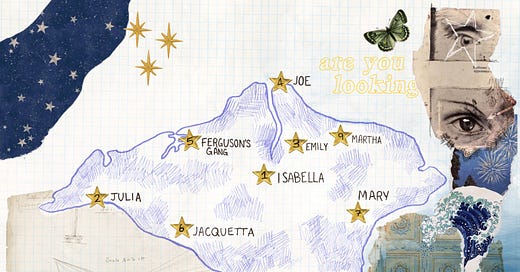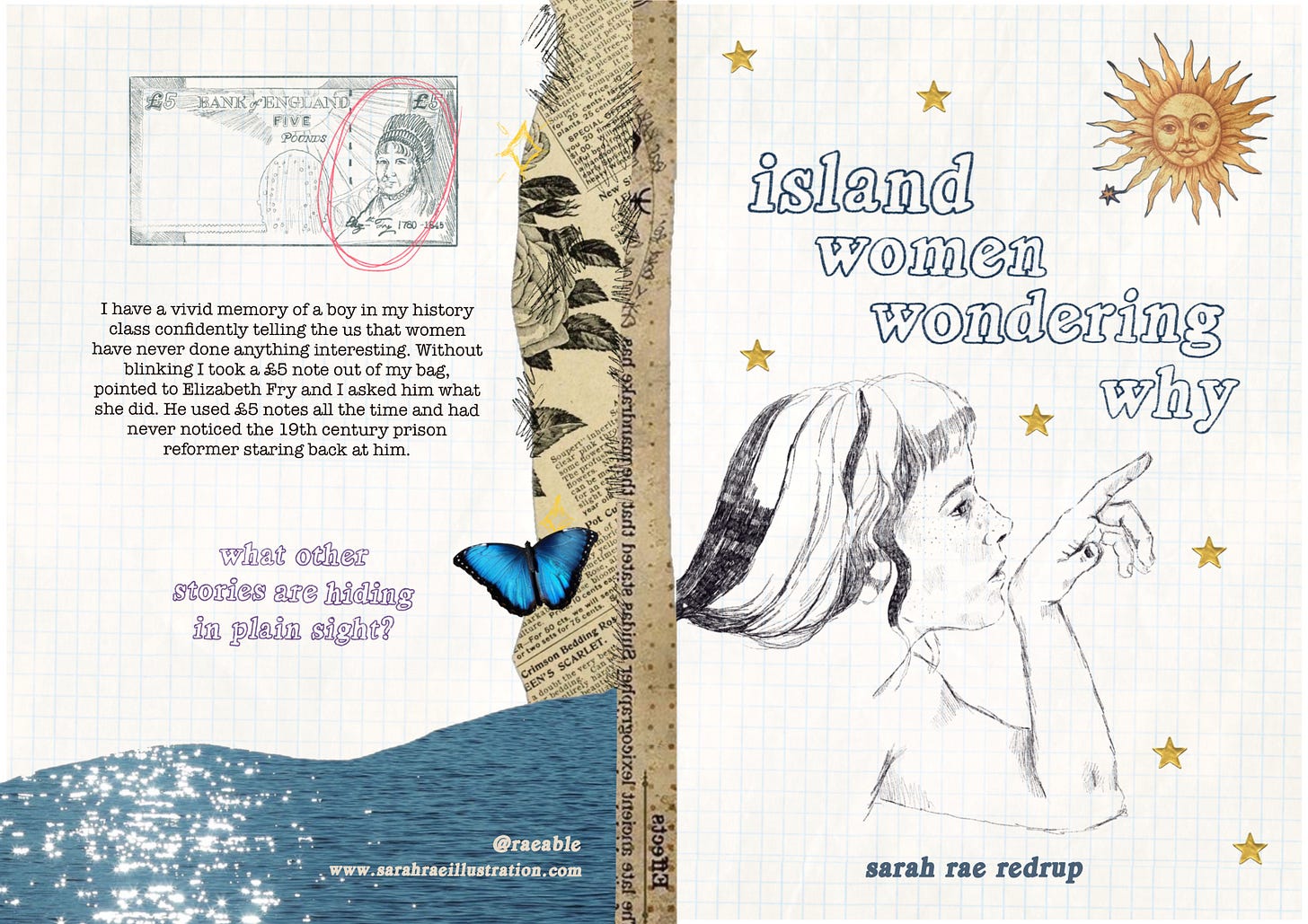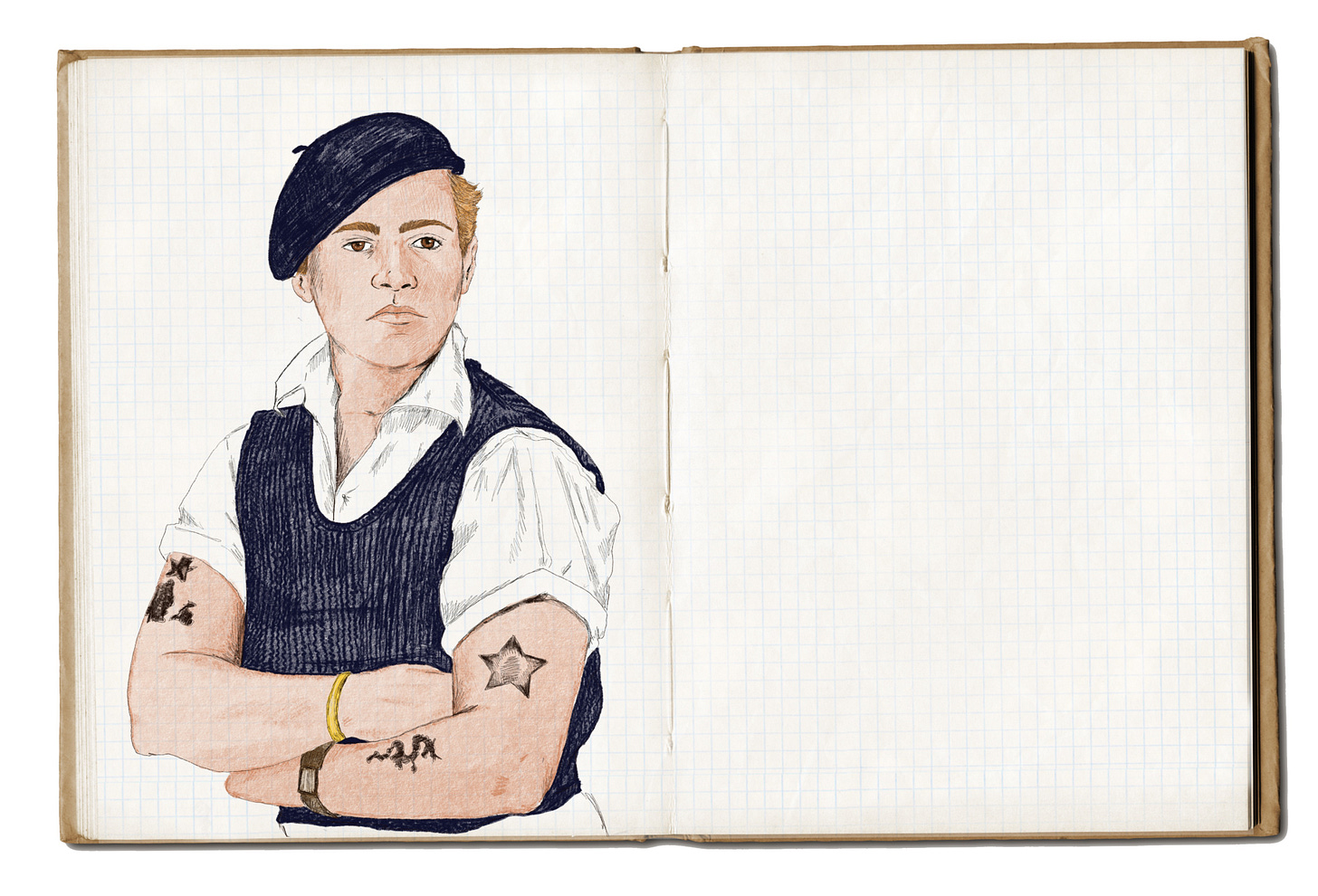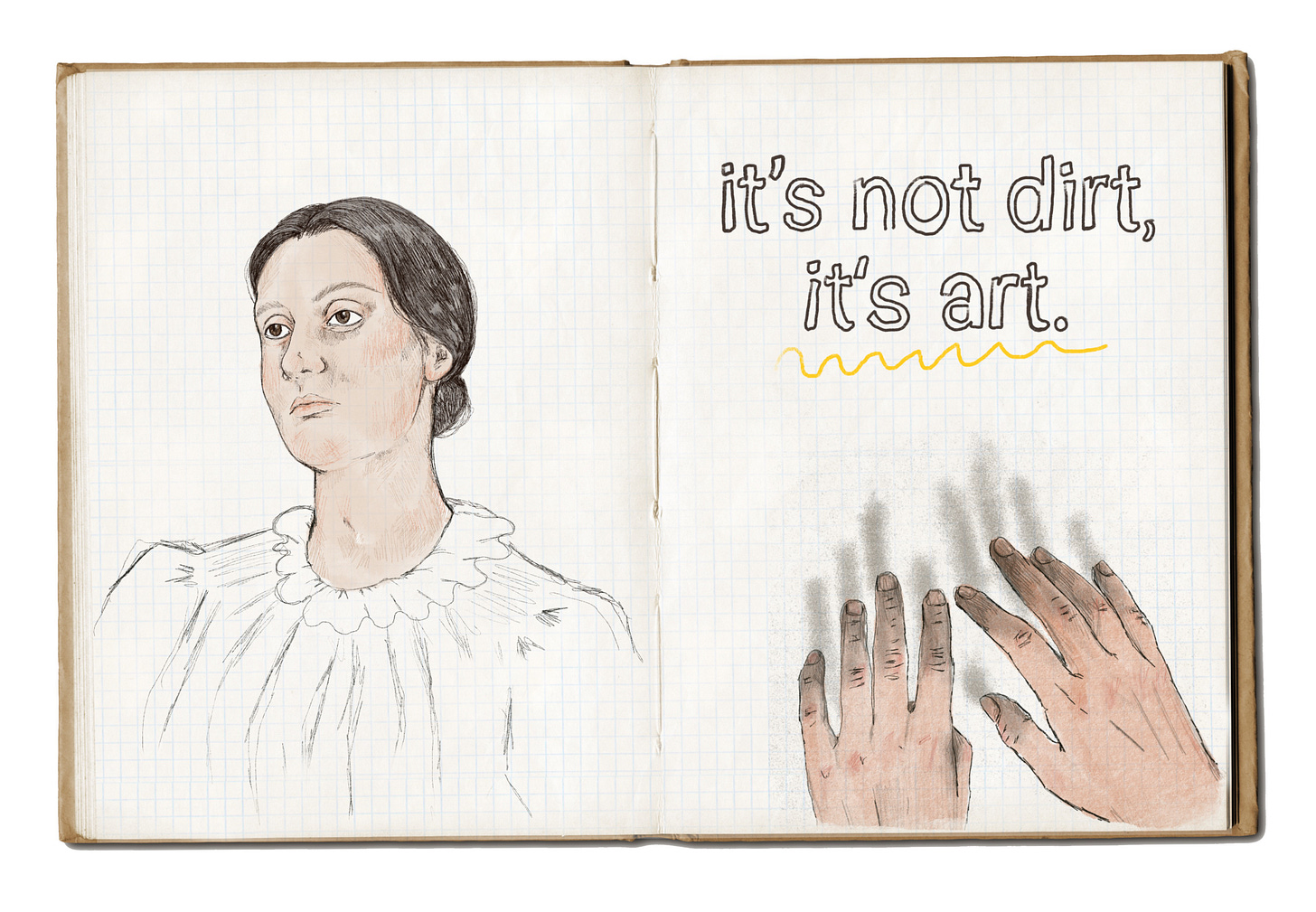Island Women Wondering Why: Uncovering the Hidden Histories of Isle of Wight Women
A journey through time and place, revealing the extraordinary stories of women who shaped an island's history but were often left out of the narrative.
I have a vivid memory of a boy in my history class confidently telling us that women have never done anything interesting. Without blinking, I took a £5 note from my bag, pointed to Elizabeth Fry, and asked him what she did. He used £5 notes all the time but had never noticed the 19th-century prison reformer staring back at him.
This moment planted a seed: what other stories are hiding in plain sight, particularly here on the Isle of Wight where I've spent most of my life?
The Birth of a Project
My zine, "Island Women Wondering Why," began as an exploration and quickly became a passion project. I wanted to uncover the stories of women who had lived on this island before me, who had walked the same beaches, looked at the same hills, and navigated life in this unique place.
What I discovered was inspiring – from Isabella De Fortibus, the last independent Lord of the Isle of Wight who ruled for 33 years in the 13th century, to modern-day Martha Eggleton, a skateboarding prodigy dropping into 4-meter ramps. The stories span centuries but share common threads of resilience, courage, and a willingness to defy expectations.
The Visual Language of Hidden Histories
Creating this zine allowed me to develop a distinctive visual approach that merges multiple techniques and media. The foundational grid paper – a nod to school notebooks and research journals – provides a unifying backdrop that connects all the stories across time periods. This subtle pattern creates a sense of documentation and discovery, reinforcing the investigative nature of the project.
My illustrations are predominantly rendered in ballpoint pen, a deliberate choice that echoes academic studies and preliminary sketches. There's an intimacy to ballpoint pen drawings – they feel immediate and honest, connecting directly to the hand that created them. For certain portraits, like Joe Carstairs the speedboat racer, I incorporated selective colour to highlight their vivacity and the boldness of their personalities.
The collage elements serve multiple purposes throughout the zine. Vintage newspaper clippings, maps, and textured papers create historical context while butterfly imagery, appearing on multiple pages, symbolizes transformation and freedom. The repeated motif of the sun (particularly visible on pages featuring Isabella De Fortibus and Ferguson's Gang) represents illumination – both literal sunshine on the island and the metaphorical light these stories bring to overlooked histories.
The consistent blue pen illustrations serve another purpose beyond aesthetic unity – they connect to my previous work exploring memory, vulnerability, and time in my sketchbook portraits. This creates a visual through-line across my various projects while allowing "Island Women Wondering Why" to maintain its distinct identity.
Nine Women, Nine Stories
The zine features nine remarkable women whose stories may not be well known:
Isabella De Fortibus (1237-1293) – The last independent Lord of the Isle of Wight and a shrewd businesswoman who successfully defended her land against King Edward I.
Julia Margaret Cameron (1815-1879) – A pioneering photographer whose dreamy portraits attracted figures like Charles Darwin to her Dimbola Lodge studio in Freshwater.
Emily Merwood (1844-1929) – The Lady Stationmaster of Queen Victoria's personal railway station in Whippingham, who shocked the nation when people discovered she ran the station alone.
Joe Carstairs (1900-1993) – An openly gay, wealthy oil heiress who won the Duke of York Trophy as "Fastest Woman on Water" and commissioned boats in Cowes with her engineer and lifelong friend.
Ferguson's Gang (1927) – A mysterious group of theatrical women who raised money to preserve historic buildings, including the Old Town Hall at Newtown Creek, all while maintaining their anonymity through elaborate masks and rituals.
Jacquetta Hawkes (1910-1996) – The first woman to enroll in Cambridge's Archeology and Anthropology course who later excavated the Longstone in Mottistone and campaigned for nuclear disarmament.
Mary Ellis (1917-2018) – A remarkable pilot who flew over 1,000 aircraft during WW2, later became one of the first women to fly the Meteor Jet Fighter, and at 100 years old, broke records again as the oldest person to fly a Spitfire.
Sue Bolton & Bridget Boudewijn (1982) – Ventnor mothers who organized protests against nuclear weapons, including climbing the Shanklin Cliff Lift and sneaking aboard a warship in Portsmouth Harbour.
Martha Eggleston – A young skateboarding prodigy conquering vertical ramps and showing remarkable courage after injuries.
Layering and Texture as Metaphor
The layering technique I've employed throughout the zine – with scanned ephemera, illustrations, and digital elements overlapping – mirrors the archaeological process of uncovering these women's stories.
Texture plays a crucial role in this project. The tactile quality of scanned papers and fabrics creates a sense of materiality even in digital form. The collaged ocean waves beneath the £5 note, the pressed butterfly specimens, and the vintage newspaper clippings all contribute to a rich textural experience that invites closer examination.
This approach to texture extends to the typography as well. The title "Island Women Wondering Why" appears in a hand-drawn outline style that echoes the map's contours, while each woman's name receives unique typographic treatment reflective of her era and personality.
A Visual Journey Forward
This zine represents the beginning of what I hope will grow into a more extensive body of work. I hope to one day develop it into a full illustrated book. For now I'm exploring ways to expand the visual language I've established while maintaining the intimate, collage-based aesthetic that gives these stories their resonance.
The process of creating these illustrations has transformed my relationship with the Isle of Wight itself. By visualizing women like Julia Margaret Cameron at Freshwater or the mysterious Ferguson's Gang at Newtown Creek, I've developed a more layered understanding of familiar landscapes. The visual mapping has become a form of reclamation, acknowledging women's contributions to places often described primarily through male achievement.
Stay tuned for deeper dives into the artwork, where I'll discuss everything from my choice of specific collage elements to the challenges of portraying women from eras with limited visual reference material. I'll also share how this project has influenced my broader artistic practice and approach to illustration.
To see more of my work or to inquire about purchasing a copy of "Island Women Wondering Why," subscribe to my Substack or follow me on Instagram @raeable








